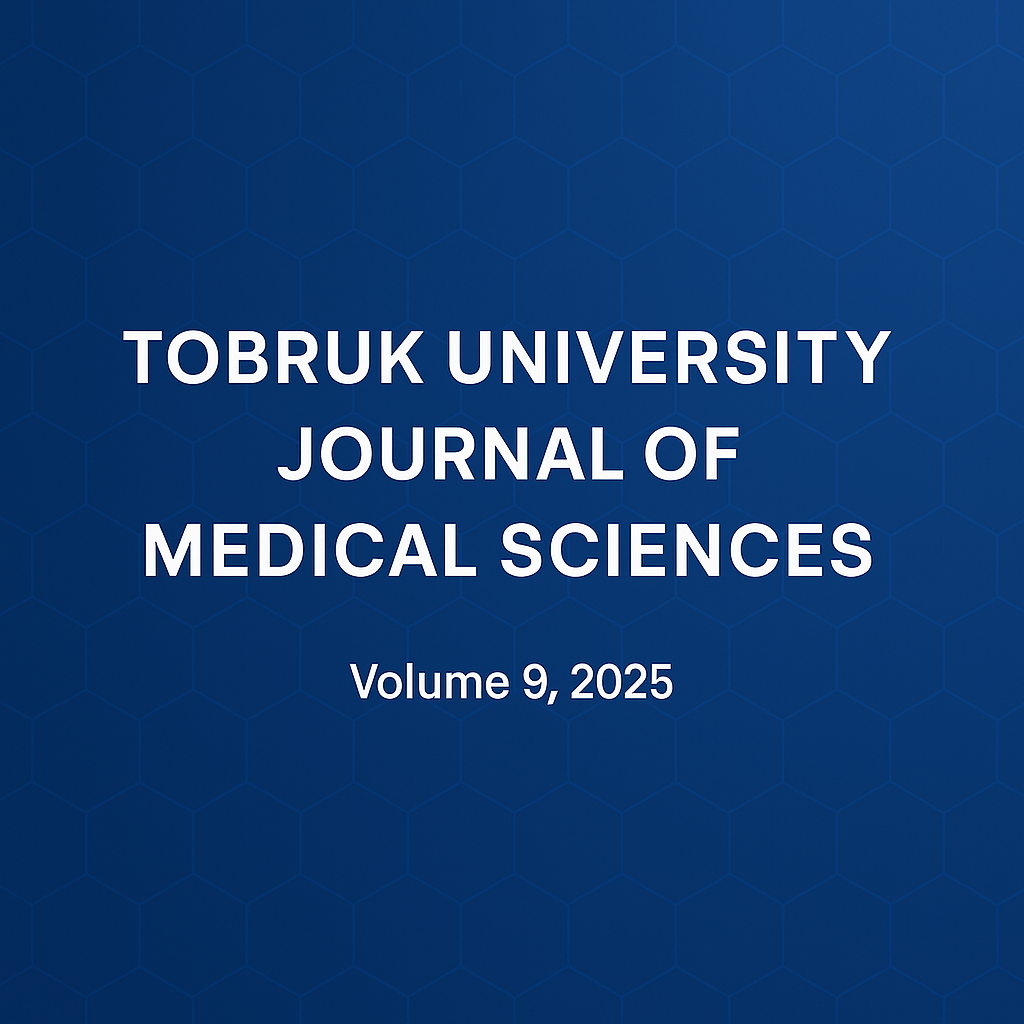Outcome of the Latarjet Procedure in Recurrent Anterior Shoulder Dislocation
DOI:
https://doi.org/10.64516/a0d49f79Keywords:
Latarjet procedure, recurrent anterior shoulder dislocation, glenoid bone loss, shoulder instability, coracoid transfer, functional outcomes, range of motion.Abstract
Recurrent anterior shoulder dislocation, especially in young, active individuals, is often linked to capsulolabral injury and glenoid bone loss. The Latarjet procedure, which transfers the coracoid to the anterior glenoid, offers mechanical stability and is commonly used when significant bone loss is present.
Objective: This study aimed to evaluate the outcomes of the Latarjet procedure in terms of recurrence rate, range of motion, functional recovery, and graft integration in patients with recurrent anterior shoulder instability and glenoid bone loss.
Methods: A prospective cohort study of 42 male patients (aged 19–36) who underwent the Latarjet procedure at Tobruk Medical Center (2016–2021) assessed outcomes over 6 months to 5 years. Key measures included recurrence, Constant-Murley score, range of motion, VAS pain scores, and radiographic graft evaluation.
Results: The recurrence rate was 2.4%, with one traumatic dislocation 10 months post-op. External rotation deficits occurred in 33% of patients, but most regained full range by 18–24 months. Constant-Murley scores were excellent in 38%, good in 33%, and fair in the rest. Most returned to work within 3–7 months (mean 5 months). Radiographs showed successful graft integration, with optimal outcomes seen when grafts were flush or slightly lateral (1–2 mm) to the glenoid rim. Conclusion: The Latarjet procedure is a reliable treatment for recurrent anterior shoulder instability with glenoid bone loss. It shows low recurrence, improved shoulder function, and few complications when done with proper technique and rehab, supporting its role as a gold standard for high-risk patients.
References
1. Yang NP, Chen HC, Phan DV, et al. Epidemiological survey of orthopedic joint dislocations based on nationwide insurance data in Taiwan, 2000–2005. BMC Musculoskelet Disord. 2011;12:253.
2. Liu SH, Henry MH. Anterior shoulder instability.Curr Rev.Clin Orthop Relat Res. 1996;(323):327–37.
3. Provencher MT, Frank RM, Leclere LE, et al. The Hill-Sachs lesion: diagnosis, classification, and management. J Am Acad Orthop Surg. 2012;20(4):242–52.
4.Taylor DC, Arciero RA. Pathologic changes associated with shoulder dislocations: arthroscopic and physical examination findings in first-time, traumatic anterior dislocations. Am J Sports Med. 1997;25(3):306–11.
5. Calandra JJ, Baker CL, Uribe J. The incidence of Hill-Sachs lesions in initial anterior shoulder dislocations. Arthroscopy. 1989;5(4):254–7.
6. Hill HA, Sachs MD. The grooved defect of the humeral head: a frequently unrecognized complication of dislocations of the shoulder joint. Radiology. 1940;35:690–700.
7.Lynch JR, Clinton JM, Dewing CB, Warme WJ, Matsen FA 3rd. Treatment of osseous defects associated with anterior shoulder instability. J Shoulder Elbow Surg. 2009;18(2):317–28.
8.Piasecki DP, Verma NN, Romeo AA, Levine WN, Bach BR Jr, Provencher MT. Glenoid bone deficiency in recurrent anterior shoulder instability: diagnosis and management. J Am Acad Orthop Surg. 2009;17(8):482–93.
9. Zhang AL, Montgomery SR, Ngo SS, Hame SL, Wang JC, Gamradt SC. Arthroscopic versus open shoulder stabilization: current practice patterns in the United States. Arthroscopy. 2014;30(4):436–43.
10. Castagna A, Markopoulos N, Conti M, Delle Rose G, Papadakou E, Garofalo R. Arthroscopic Bankart suture-anchor repair: radiological and clinical outcome at minimum 10 years of follow-up. Am J Sports Med. 2010;38(10):2012–6.
11. Bessière C, Trojani C, Carles M, Mehta SS, Boileau P. The open Latarjet procedure is more reliable in terms of shoulder stability than arthroscopic Bankart repair. Clin Orthop Relat Res. 2014;472(8):2345–51.
12. Balg F, Boileau P. The instability severity index score: a simple pre-operative score to select patients for arthroscopic or open shoulder stabilisation. J Bone Joint Surg Br. 2007;89(11):1470–7.
13. Burkhart SS, De Beer JF. Traumatic glenohumeral bone defects and their relationship to failure of arthroscopic Bankart repairs: significance of the inverted-pear glenoid and the humeral engaging Hill-Sachs lesion. Arthroscopy. 2000;16(7):677–94.
14. Ahmad E, Basit MA, Shakeel M, Hamid MS, Jalal SF, Hanif MM. Outcome of Latarjet procedure for recurrent anterior shoulder dislocation. J Pak Orthop Assoc. 2021;33(2):81–6.
15. Giles JW, Degen RM, Johnson JA, Athwal GS. The Bristow and Latarjet procedures: why these techniques should not be considered synonymous. J Bone Joint Surg Am. 2014;96(16):1340–8.
16. Samilson RL, Prieto V.Dislocation arthropathy of the shoulder. J Bone Joint Surg Am.1983;65:456–60.
17. Edouard P. Relationship between strength and functional index scores after shoulder stabilization surgeries. Ann Phys Rehabil Med. 2010;53:499–510.
18. Shah AA, Butler RB, Romanowski J, Goel D, Karadagli D, Warner JJ. Short-term complications of the Latarjet procedure. J Bone Joint Surg Am. 2012;94(6):495–501.
Downloads
Published
Issue
Section
License
Copyright (c) 2025 EBRAHIM. M. ELFKHRI , MOUNIR .R. ATIA (Author)

This work is licensed under a Creative Commons Attribution 4.0 International License.











